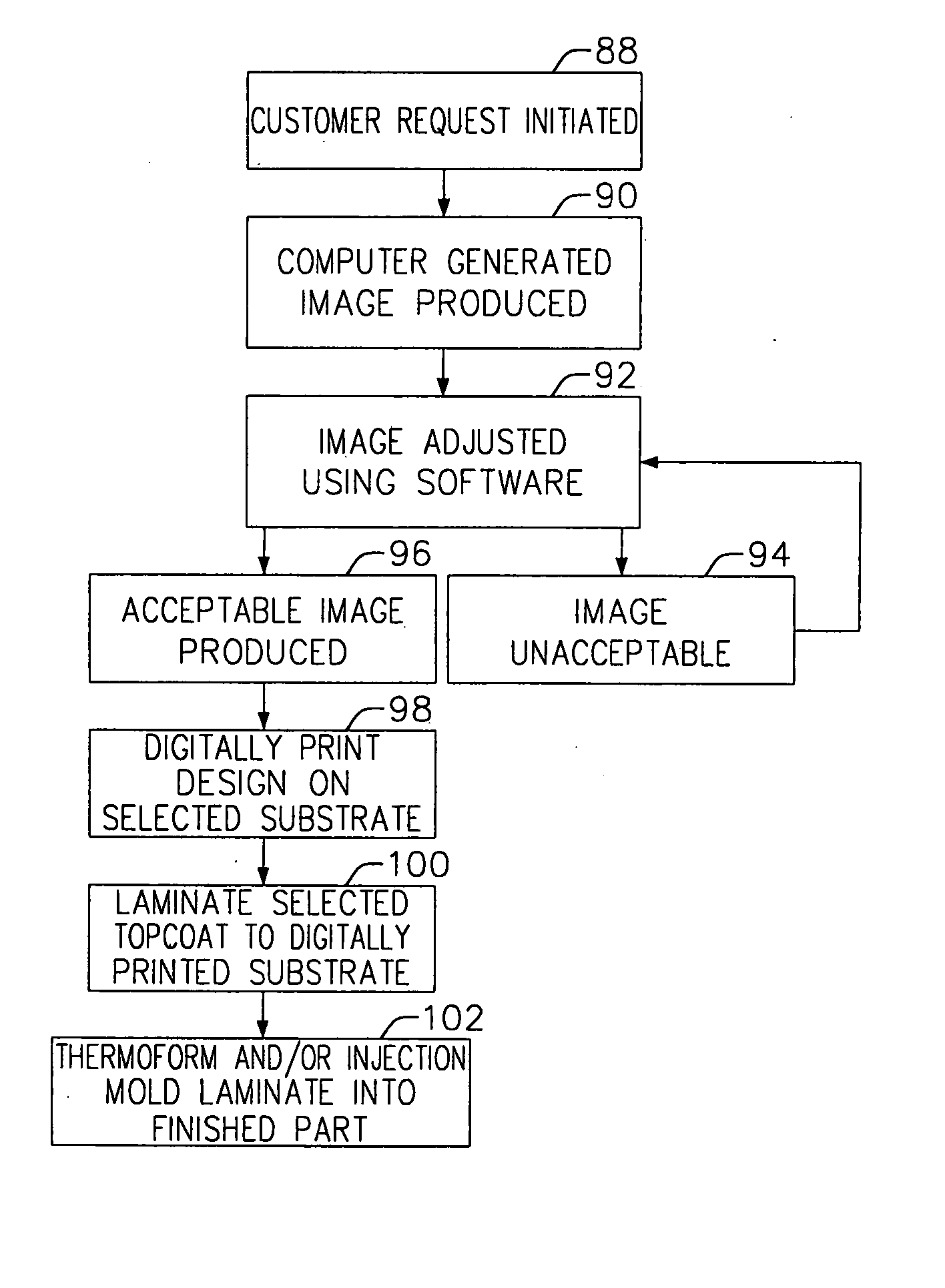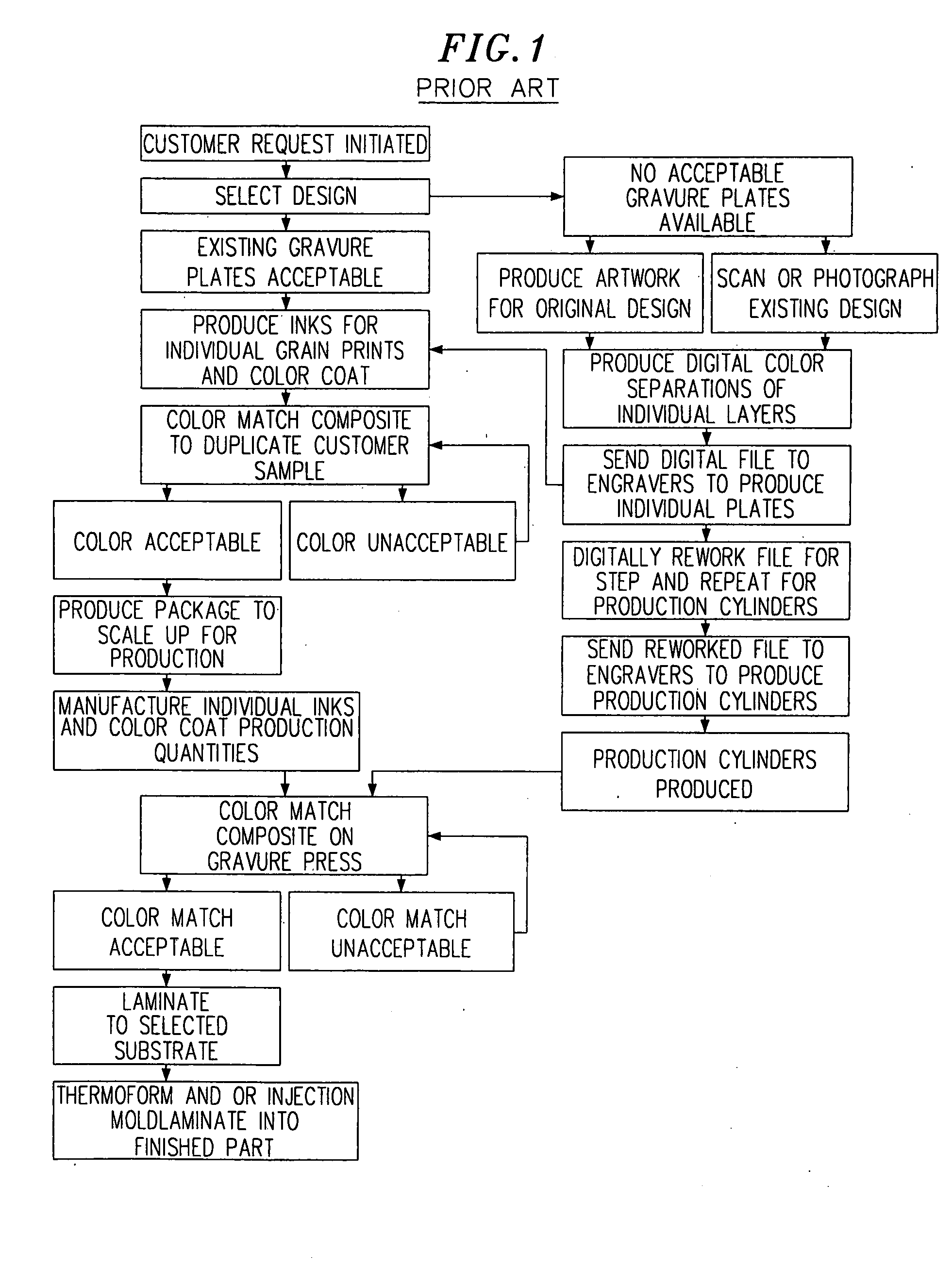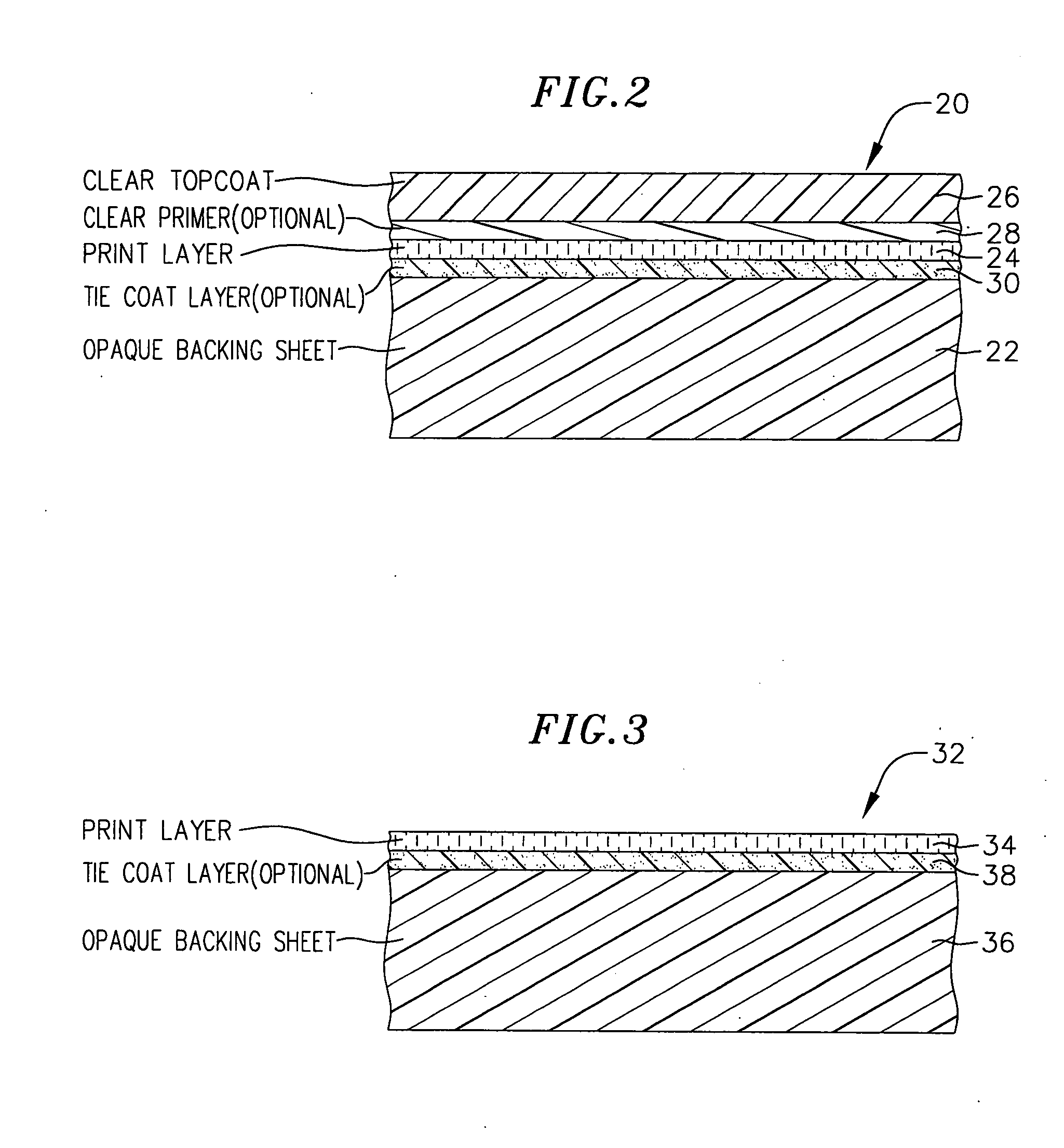Digitally printed products and process
a digital printing and product technology, applied in the field of digital printing products and processes, can solve the problems of slowing down the color matching process, achieve the effects of high quality, speed up the color matching processing, and produce multiple color images
- Summary
- Abstract
- Description
- Claims
- Application Information
AI Technical Summary
Benefits of technology
Problems solved by technology
Method used
Image
Examples
example 1
[0052] This example (and Examples 2 to 4) describe digital printing on a baseweb comprising a thin polymeric film supported by a temporary carrier and subsequently laminating the baseweb to an ABS backing sheet. A roll of 1.0 mil transparent PVC film, supported by a 1.0 mil high-gloss PET temporary carrier, was placed in an ink jet printer. Images were printed directly on the surface of the film, in the absence of an ink receptive layer on the baseweb. The film was heated to 120 deg. F. immediately before contact with the print head. The laminates and films of this invention are pre-heated prior to printing for improved ink adhesion. As presently understood, 120° F. is the minimum temperature needed for good adhesion. Several images of different colors were printed side-by-side on the PVC film. These images had previously been adjusted using software that changes such print quality factors as hue, contrast, lightness / darkness, saturation, resolution, and image size.
[0053] The ink j...
example 2
[0062] A roll of 0.7 mil transparent urethane film, supported by a 1.0 mil high-gloss PET temporary carrier, was placed in an ink jet printer. The same printer, printing inks, printing rate, resolution, and images were used as in Example 1. The urethane film did not have an ink receptive layer. The urethane film was heated to 160 deg. F. immediately before contact with the print head. The higher film pre-heat temperature (as compared to Example 1) was found to give a better print appearance for the urethane.
[0063] The ink jet images were printed directly onto the film surface, and the film was again heated in-line with an infrared heater, to a film temperature of 120 deg. F., for solvent drying the printing inks.
[0064] After the film was removed from the printer, it was tested for retained solvent. The retained solvent was 8.8%, which is comparable to a gravure printed sample of urethane.
[0065] The same laminating, thermoforming, and injection molding steps were used as in Exampl...
example 3
[0067] A roll of 1.8 mil transparent PVDF / acrylic film, supported by a 2.0 mil high-gloss PET temporary carrier, was placed in an ink jet printer. The same printer, printing inks, printing rate, film pre-heat temperature, infrared heating, resolution, and images were used as in Example 2. The film did not have an ink receptive layer.
[0068] After the film was removed from the printer, it was tested for retained solvent. The retained solvent was 2.9%, which is comparable to a gravure printed sample of PVDF / acrylic film.
[0069] The same laminating, thermoforming, and injection molding steps were used, as in Examples 1 and 2.
[0070] The resulting injection molded part was tested in the Xenon Weatherometer, using the SAE J1885 test spec. After 500 and 1240 kilojoules exposure, the sample had retained its original gloss and DOI.
[0071] In addition, thermoformed (but not injection molded) samples were subjected to the following tests:
[0072] 2000 hours QUV (ASTM G53 spec.)
[0073] 2000 hou...
PUM
| Property | Measurement | Unit |
|---|---|---|
| Temperature | aaaaa | aaaaa |
| Length | aaaaa | aaaaa |
| Length | aaaaa | aaaaa |
Abstract
Description
Claims
Application Information
 Login to View More
Login to View More - R&D
- Intellectual Property
- Life Sciences
- Materials
- Tech Scout
- Unparalleled Data Quality
- Higher Quality Content
- 60% Fewer Hallucinations
Browse by: Latest US Patents, China's latest patents, Technical Efficacy Thesaurus, Application Domain, Technology Topic, Popular Technical Reports.
© 2025 PatSnap. All rights reserved.Legal|Privacy policy|Modern Slavery Act Transparency Statement|Sitemap|About US| Contact US: help@patsnap.com



